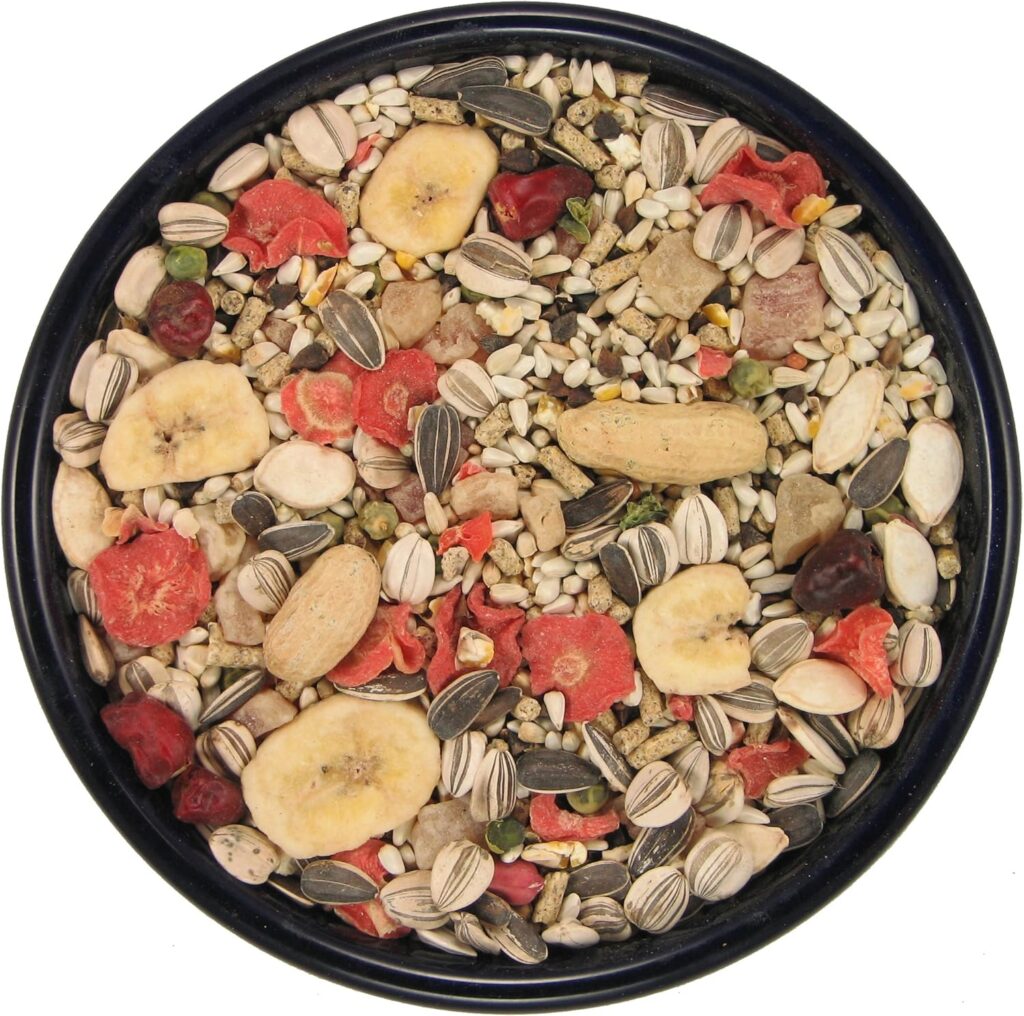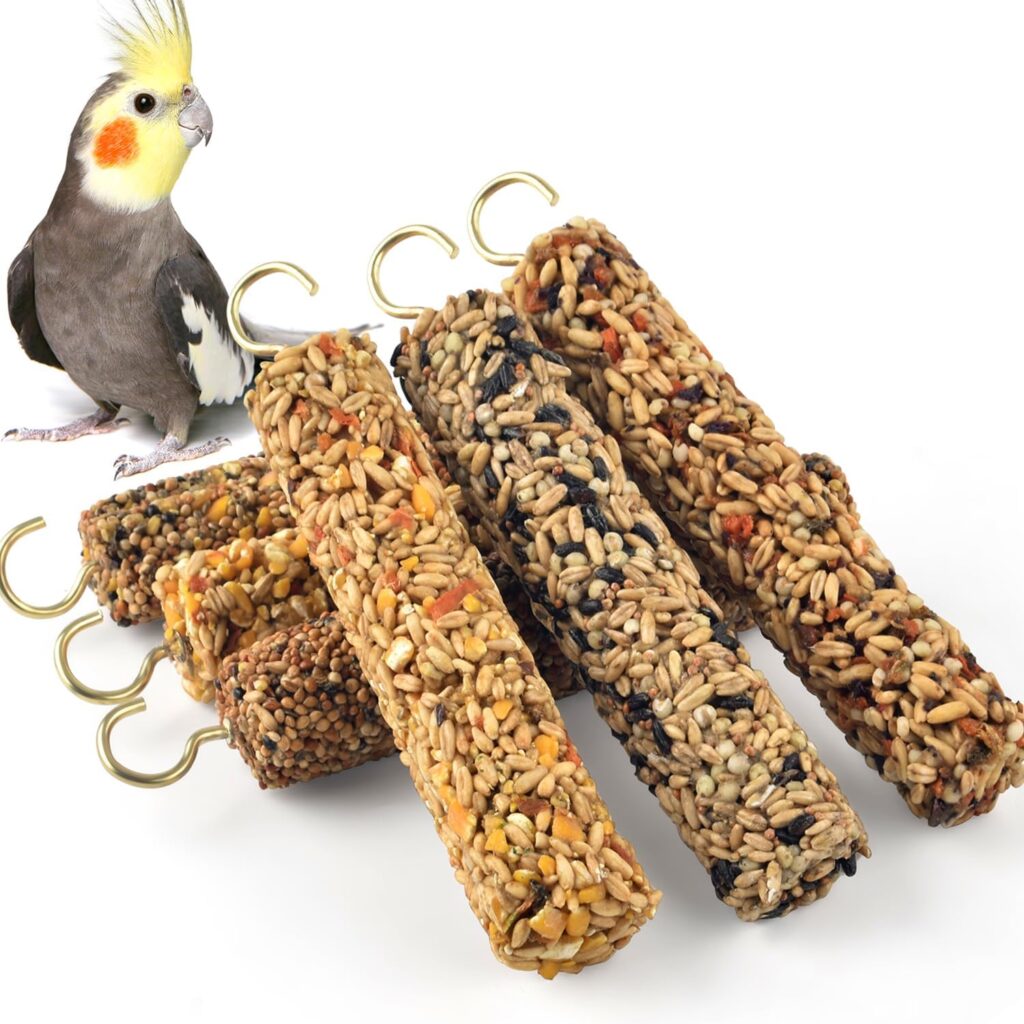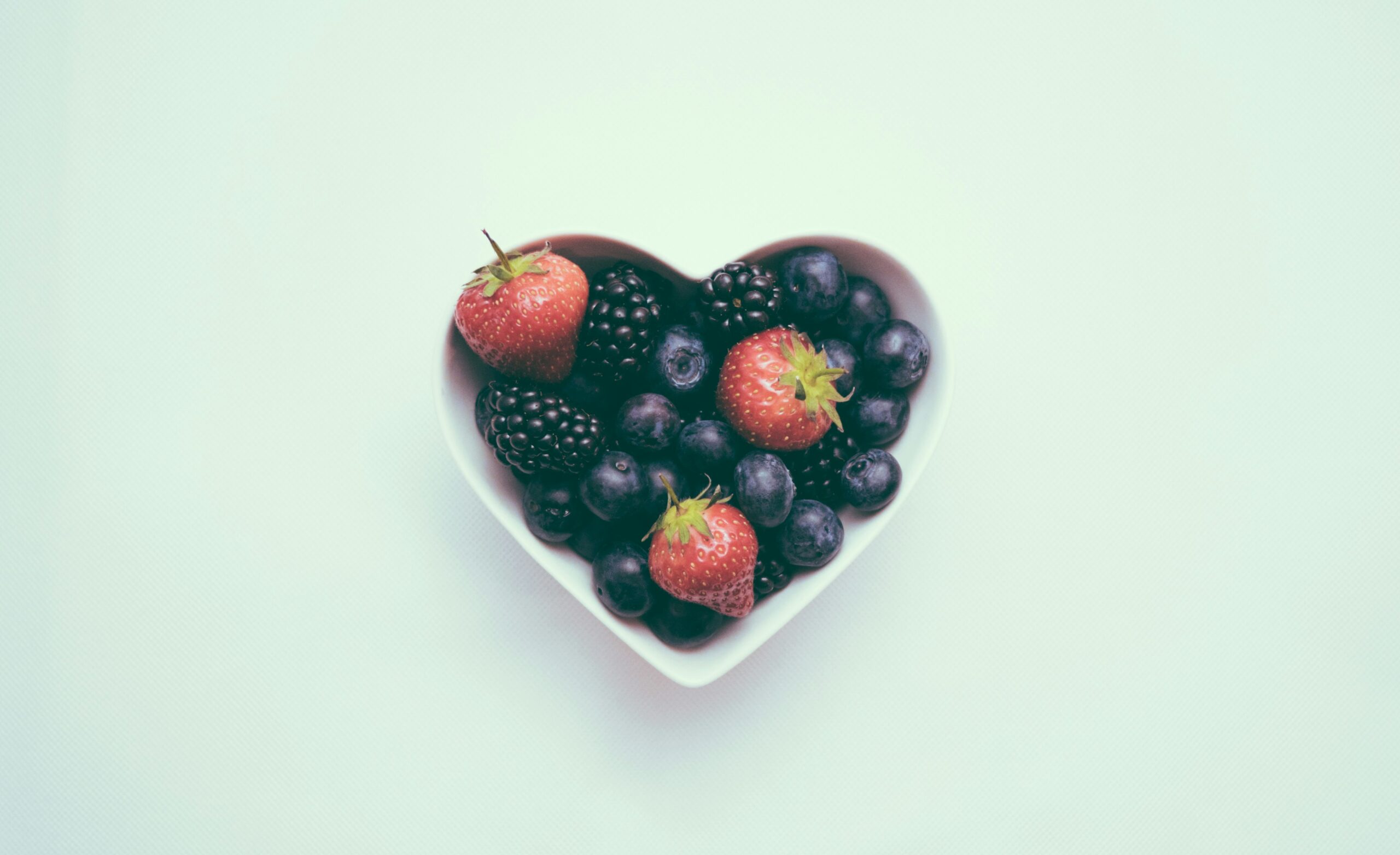Table of Contents
Parrot Diet and Nutrition Basics
Why Nutrition Matters
Feeding your parrot right is like giving them a ticket to a long, happy life. A good diet means they get all the vitamins, minerals, and nutrients they need. This keeps their feathers shiny, their bones strong, and their immune system ready to fight off any nasties. Skimp on their diet, and you might see them getting sick or acting out. For more on keeping your feathered friend healthy, check out our parrot health issues section.
Fruits vs. Veggies: The Great Debate
When it comes to feeding your parrot, veggies should be the star of the show, with fruits playing a supporting role. Aim for a 10:1 ratio of veggies to fruits. But remember, some parrots like Caiques, Eclectus, and Lories need more fruit because of their special dietary needs.
The best fruits and veggies for parrots are the colorful ones. Think bright orange peaches, pumpkins, sweet potatoes, and carrots. These are packed with beta-carotene, which turns into vitamin A—super important for parrots (Omlet). Dark green veggies like kale, broccoli, and dandelion leaves are also winners, loaded with B vitamins, antioxidants, and minerals.
| Type | Examples | Key Nutrients |
|---|---|---|
| Orange Veggies | Peaches, Pumpkins, Sweet Potatoes | Beta-Carotene, Vitamin A |
| Green Veggies | Kale, Broccoli, Dandelion Leaves | B Vitamins, Antioxidants |
Fresh produce should be a daily treat for your parrot, with veggies being a must every day and fruits given as a weekly bonus. Not only do these foods provide essential nutrients, but they also keep your parrot’s diet interesting.

A balanced diet for your parrot should include fresh veggies, fruits, and either pellets or seed mixes, with about 40% of their diet being fresh produce. There’s a bit of a debate about whether veggies are better than fruits because of the sugar in fruits. Your vet can give you the best advice on how much of each to feed (Exotic Direct). For more tips on parrot care, visit our parrot care tips section.
By feeding your parrot a balanced diet, you’re setting them up for a life full of health and happiness.
Switching from Seeds
Switching our parrots from a seed-heavy diet to a more balanced and nutritious one is a game-changer for their health and happiness. Let’s break down why seeds aren’t the best and how a better diet can make a world of difference.
Why Seeds Aren’t Enough
Feeding parrots only seeds, especially sunflower seeds, can mess with their health big time. Seeds are like junk food for birds—tasty but not very nutritious. Here’s what can go wrong:
- Heart Problems: Seeds are high in fat and low in essential nutrients, which can lead to heart issues (Aviator Harness).
- Nutrient Gaps: Seeds can throw off the balance of calcium and phosphorus, leading to deficiencies in important amino acids (Merck Vet Manual).
- Weight Gain: The high-fat content in seeds can make parrots overweight, a common problem for birds on a seed diet.
The Perks of a Balanced Diet
Moving your parrot to a diet that includes pellets, fruits, and veggies can do wonders:
- Complete Nutrition: Pellets are packed with vitamins and minerals that seeds lack (Exotic Direct). This ensures your parrot gets all the nutrients they need.
- Lower Disease Risk: A varied diet can help prevent heart issues and nutrient deficiencies, keeping your parrot healthier.
- Better Behavior: Using seeds as treats in foraging toys and training can encourage good behavior without making seeds a diet staple (Aviator Harness).
| Health Concerns | Seed Diet | Balanced Diet |
|---|---|---|
| Heart Issues | High | Low |
| Nutrient Deficiencies | Common | Rare |
| Obesity | High | Low |
| Behavioral Benefits | Limited | Enhanced |
Switching diets should be slow, taking a few weeks to help your parrot get used to the new foods. For more tips on diet changes and keeping your parrot healthy, check out our articles on parrot care tips and parrot health issues.
By making this switch, we can help our feathered buddies live longer, healthier, and happier lives.
Foods to Avoid
Keeping our parrots healthy means knowing what not to feed them. Some foods can be downright dangerous, even toxic. Let’s break it down.
Harmful Foods for Parrots
Parrots have unique dietary needs, and some everyday foods can be harmful. Here’s a list of no-go items:
- Avocados: They have persin, which is a big no-no for parrots.
- Caffeine: Found in coffee, tea, and some sodas, caffeine can mess with their hearts and make them hyper.
- Chocolate: Contains theobromine and caffeine, both bad news for parrots.
- Excess Salt: Can cause dehydration and mess up their electrolytes.
- Shellfish: Can be contaminated and cause allergic reactions.
- Fruit Pits: Have cyanide, which is toxic to birds.
- Onions and Garlic: Can lead to anemia and stomach issues.
- Xylitol: A sugar substitute that can cause low blood sugar and liver problems.
For more on safe treats, check out parrot care tips.
Toxicity Risks
Feeding parrots the wrong foods can lead to serious health issues. Here’s a quick look at the risks:
| Food | Toxic Component | Health Risks |
|---|---|---|
| Avocados | Persin | Breathing problems, heart failure |
| Caffeine | Caffeine | Heart issues, hyperactivity |
| Chocolate | Theobromine, Caffeine | Vomiting, diarrhea, seizures |
| Excess Salt | Sodium | Dehydration, electrolyte issues |
| Shellfish | Contaminants | Allergic reactions, toxicity |
| Fruit Pits | Cyanide | Breathing problems, heart issues |
| Onions, Garlic | Sulfur compounds | Anemia, stomach irritation |
| Xylitol | Sugar substitute | Low blood sugar, liver failure |
For a full guide on harmful foods, see Merck Vet Manual.
It’s important to give our parrots a varied and balanced diet full of vitamins and minerals. For tips on introducing new foods and ensuring a nutritious diet, visit our section on parrot diet and nutrition.
Knowing what foods to avoid, we can keep our parrots happy and healthy. For more on parrot care, check out our articles on parrot veterinary care and parrot health issues.
Introducing New Foods
Feeding our parrots new foods can be a blast for both us and our feathered buddies. A mix of different foods is key to keeping them healthy and happy.
Why Mix It Up?
Mixing up their diet is super important. Giving them a variety of foods means they get all the good stuff they need, like vitamins and minerals, to keep their feathers shiny and their bodies strong. Parrots love munching on different shapes, textures, and flavors, which makes mealtime fun. Fresh veggies, cooked grains, and sprouts can help avoid nutritional gaps and boost their immune system.
| Food Type | Examples | Nutritional Benefit |
|---|---|---|
| Fresh Produce | Carrots, Kale, Apples | Vitamins and Minerals |
| Cooked Grains | Brown Rice, Quinoa | Fiber and Protein |
| Sprouts | Alfalfa, Mung Beans | Antioxidants and Enzymes |
Regularly offering these foods helps parrots get used to new tastes and textures (Aviator Harness).
Fun Ways to Serve Food
How we serve food can make a big difference in whether our parrots will try it. Trying out different ways to present food can spark their curiosity.
- Shapes and Sizes: Cut fresh foods into cubes, strips, or tiny pieces. Parrots love variety, and different shapes can make feeding time more exciting (Quora).
- Hanging Foods: Hang lettuce or other greens from the top of their cage. This can encourage them to forage, making mealtime more interactive.
- Foraging Toys: Use foraging toys or thread fruits and veggies between the cage bars. This can stimulate their natural behaviors and keep them mentally active.
- Stainless Steel Skewers: Use parrot-safe skewer toys to present whole pieces of fruits and veggies. This can make food more enticing and fun to explore.
Using these tricks, we can get our parrots to try and enjoy a wider range of healthy foods. For more tips on parrot care, check out our articles on parrot care tips and parrot cage setup.
Meal Schedule and Portions
Feeding your parrot right is key to keeping them chirpy and healthy. Let’s break down the best times and portions to ensure your feathered buddy gets the necessary nutrition.
Feeding Frequency
Your parrot should eat twice a day. Syncing their meal times with yours can boost bonding and create a routine they’ll love. Don’t leave food out all day—it can lead to overeating and obesity.
| Meal Time | Description |
|---|---|
| Morning (8 AM – 10 AM) | Serve a balanced mix of pellets, fresh veggies, and the occasional fruit. |
| Evening (5 PM – 7 PM) | Offer a similar mix to the morning meal, keeping it varied. |
Portion Control Guidelines
Keep portions generous but not too much. Like us humans, it is not good to overeat or under-eat. Here’s a quick guide:
| Food Type | Portion Size | Frequency |
|---|---|---|
| Pellets | 1/4 cup | Daily |
| Fresh Vegetables | 1/2 cup | Twice daily |
| Fresh Fruits | 1/4 cup | Twice a week |
| Seeds and Nuts | 1 tsp | Occasional treats |
Parrots love colorful meals. Mix dark green veggies like broccoli, deep orange ones like squash or sweet potatoes, and some protein like beans or lentils.
Try different food shapes and hang lettuce from their cage to keep things fun. You can also give them pasta or egg for extra protein and a cuttlebone for calcium.

For more tips on parrot care, check out our parrot care tips article. Need help setting up their cage? Visit parrot cage setup.
Pellets vs. Seeds: What’s Best for Your Parrot?
Choosing between pellets and seeds for your parrot’s diet can be a never-ending debate. Let’s break it down and see what works best for our feathered pals.
Why Pellets Rock
Pellets often get the thumbs-up from bird vets. They pack in all the good stuff—vitamins and minerals—that seeds might miss. Here’s why pellets could be your parrot’s new best friend:
- Balanced Nutrition: Pellets are like a multivitamin for birds. They cover all the nutritional bases, fixing the gaps that seed diets might leave.
- Consistency: Every pellet is a little nugget of goodness, making sure your parrot gets the same nutrients in every bite.
- No More Picky Eaters: Unlike seeds, pellets don’t let your parrot play favorites. They can’t just pick out the tasty bits and ignore the rest.
- Less Fat: Pellets usually have less fat than seeds, helping to keep your bird from getting chunky and avoiding heart issues.
Switching your parrot from seeds to pellets? Do it slowly over a few weeks to make the change smoother. Need more tips? Check out our parrot health guide.
The Skinny on Seeds
Seeds are a natural part of a parrot’s diet, but going all-seed can affect their health. Here’s what you need to know:
- Nutritional Gaps: Seed diets can lack important nutrients like calcium and amino acids (Merck Vet Manual).
- High Fat: Seeds, especially sunflower seeds, are fatty. Too many can lead to obesity and other health problems. Keep sunflower seeds to about a dozen a day (Exotic Direct).
- Picky Eaters: Parrots love to pick out their favorite seeds, leaving the healthier ones behind, which can lead to nutrient deficiencies.
- Training Treats: Seeds can still be useful as treats or rewards during training. They can help reinforce good behavior while keeping the diet balanced.
| Factor | Pellets | Seeds |
|---|---|---|
| Nutritional Balance | High | Low |
| Fat Content | Low | High |
| Risk of Selective Eating | Low | High |
| Suitable for Training | Moderate | High |
For the best diet, mix it up! Combine pellets with a few seeds and fresh fruits and veggies. Want more parrot care tips? Head over to our parrot care tips page.
Foraging and Mental Stimulation
Foraging is a big deal for parrots, mirroring their wild habit of hunting for food. This keeps their minds sharp and their spirits high. Let’s dive into how we can mimic these natural behaviors and develop some fun foraging toy ideas for our feathered pals.
Mimicking Natural Behaviors
In the wild, parrots spend loads of time searching for food. This isn’t just about eating; it’s about keeping their brains and bodies in tip-top shape. Here’s how you can bring a bit of the wild into your home:
- Mix It Up: Parrots love variety. To make mealtime more exciting, try offering different shapes of food and hanging lettuce from the top of their cage (Quora).
- Fresh is Best: Add fresh chopped veggies and the occasional fruit to their diet. It’s nutritious and keeps things interesting.
- Cuttlebone and Mineral Blocks: These are great for calcium and other essential minerals, especially during breeding (Quora).
Foraging Toy Ideas
Foraging toys are a blast for parrots, keeping them busy and their minds buzzing. These toys mimic the challenge of finding food in the wild. Here are some ideas:
| Toy Idea | Description |
|---|---|
| Foraging Balls | Fill small balls with treats or pellets. Parrots will love the challenge of getting the food out. |
| Lettuce Hangers | Hang lettuce or other leafy greens from the top of the cage. This encourages natural foraging behavior. |
| Puzzle Feeders | Use puzzle feeders that make the parrot solve a puzzle to get the food. |
| Shreddable Toys | Toys made from paper or cardboard that can be shredded. Hide treats inside for extra fun. |
| DIY Foraging Boxes | Fill boxes with shredded paper and hide treats inside. Parrots will enjoy digging through to find their food. |
For more creative ways to mentally stimulate your parrot, check out our parrot care tips and parrot behavior problems sections.
Adding these foraging activities and toys to your parrot’s daily routine can help them mimic their natural behaviors and keep their minds active. This keeps them entertained and promotes a healthier and happier life.
Nutritional Deficiencies and Risks
Keeping our parrots healthy and happy starts with what we feed them. Knowing the common nutritional gaps and their risks can make a difference for our feathered buddies.
Common Nutritional Deficiencies
Parrots need a mix of vitamins and minerals to stay in top shape. But some nutrients often fall short:
- Calcium Deficiency: Calcium is important for parrots. It keeps their bones, beaks, and feathers strong and even helps with their mood. Sadly, many birds suffer from a lack of calcium, which can be deadly.
- Vitamin A Deficiency: This one sneaks up on pet birds, especially those munching on seeds and nuts. Vitamin A is key for healthy skin, good vision, and a strong immune system (Merck Vet Manual).
- Amino Acid Deficiencies: Seed-heavy diets can mess up the balance of calcium and phosphorus and leave out essential amino acids.
| Nutrient | Why It Matters | Where to Find It |
|---|---|---|
| Calcium | Strong bones, beaks, feathers | Leafy greens, cuttlebone |
| Vitamin A | Healthy skin, vision, immunity | Carrots, sweet potatoes |
| Amino Acids | Building blocks of protein | Pellets, legumes |
Risks of Poor Diets
Feeding our parrots the wrong stuff can lead to big problems:
- Acute Hypocalcemia: Low calcium levels in the blood can hit African grey parrots hard, especially those on seed diets. Look out for weakness, tremors, and seizures. Quick treatment with calcium can help.
- Obesity: Too many seeds and nuts can make parrots fat, leading to liver disease and other issues.
- Feather Plucking: Nutritional gaps can cause parrots to pluck their feathers, leading to poor feather quality. For more information, check out our article on parrot feather plucking.
It is crucial to switch our parrots from seeds to a balanced diet with pellets, fruits, and veggies. This change can help avoid common nutritional problems and their risks. For tips on making this switch, see our section on transitioning from seeds.
By mixing up their diet and keeping an eye on what they eat, we can help our parrots live long, healthy lives.

